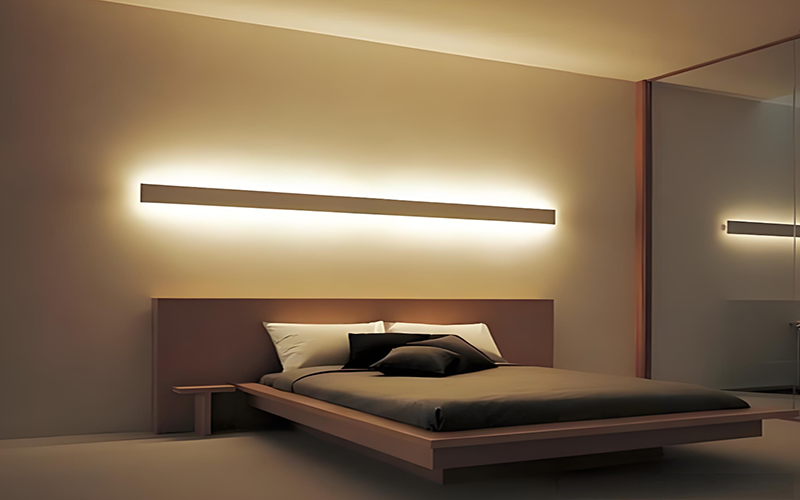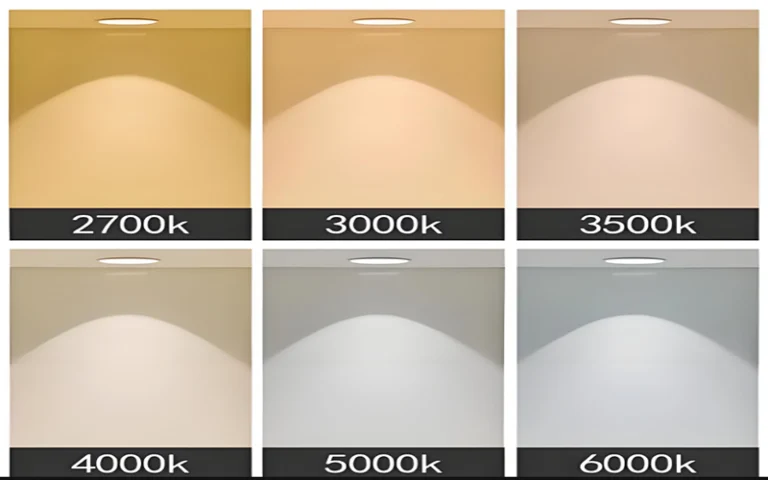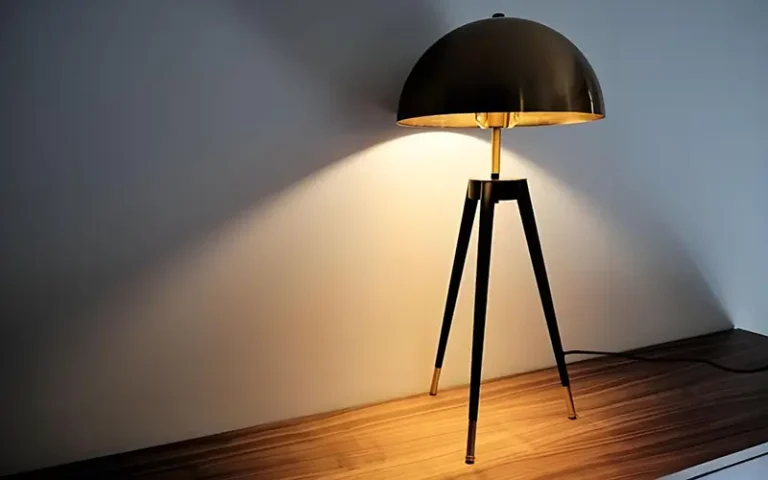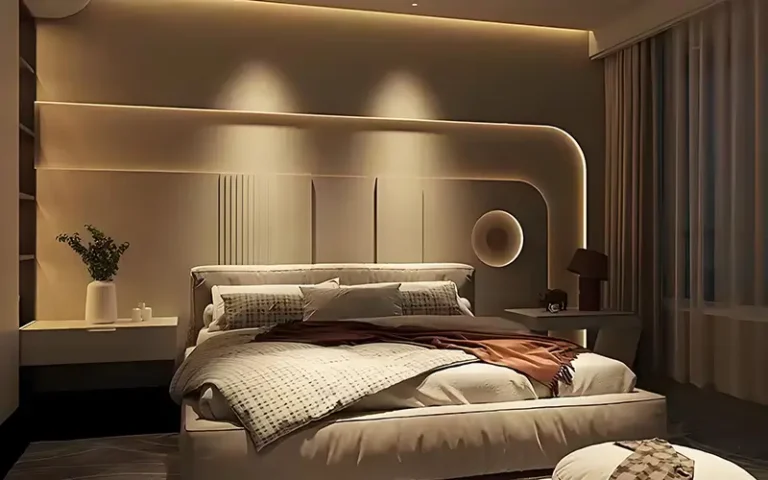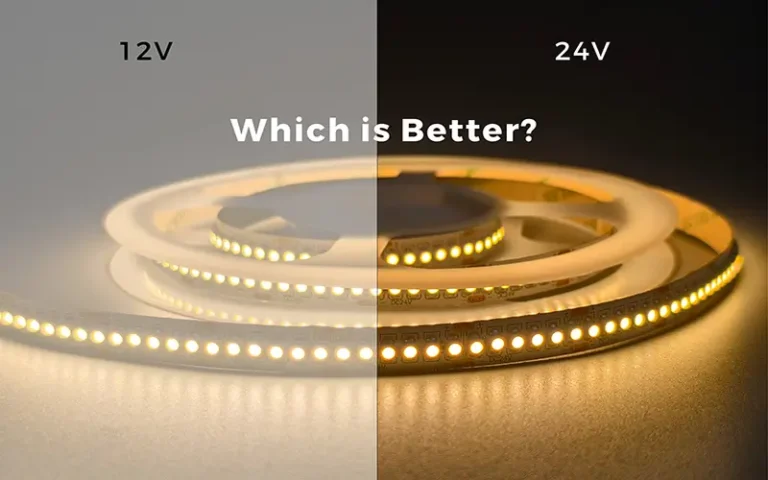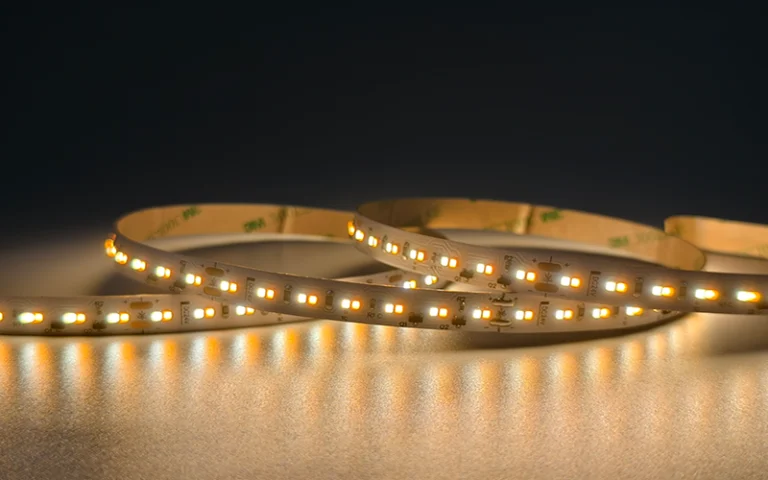12 Tips for Bedroom Lighting Design
The bedroom is a place for warmth and sleep. So we must ensure that the bedroom is well-lit and creates a peaceful and warm space. By carefully considering the type, position and intensity of light, you can turn your bedroom into a haven for relaxation and rejuvenation. Next, we will mainly analyze the bedroom lighting design that allows us to upgrade the style and comfort of the bedroom.
Why Bedroom Lighting Design Matters?
Bedroom lighting design is very important because it not only affects the beauty and atmosphere of the room, but is also directly related to the comfort, relaxation and sleep quality of the occupants. How to choose the bedroom lighting, pls read How to Choose the Best LED Lights for a Bedroom?
Create a comfortable atmosphere
The bedroom is usually a place for relaxation and rest, and good lighting design can help create a warm, quiet, and relaxing atmosphere. By adjusting the brightness and color temperature of the lights, you can make the atmosphere in your bedroom more suitable for rest and sleep.
Promote sleep quality
Research shows that the intensity and color temperature of light have a significant impact on sleep. Blue, warm light (such as yellow or orange light) can help relax the nervous system and promote better sleep. With smart lamps, users can adjust the color temperature of the light to create an environment suitable for sleeping.
Flexibility and functionality
Bedroom lighting design should not only focus on aesthetics, but also take into account functionality. Using dimmable lamps can make bedroom lighting more flexible and adapt to different activities – from getting up in the morning, reading at night to falling asleep.
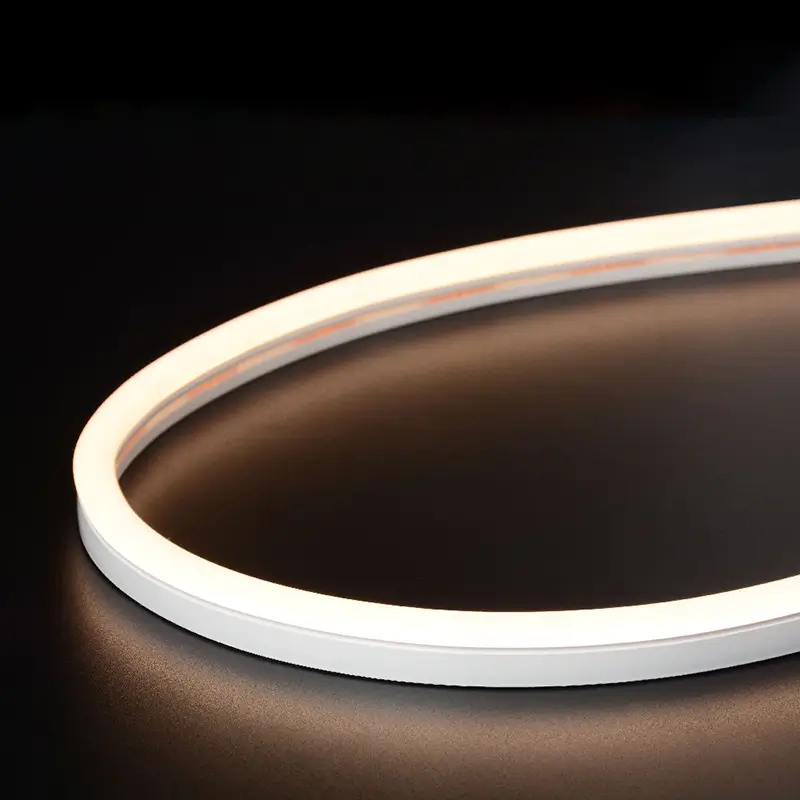
Highlight the decorative effect
Reasonable lighting design can highlight the decoration style and decorative effect of the bedroom. For example, LED light strips can be used to decorate the bedside background wall or cabinet to highlight some special designs. Through the coordination of lights, the bedroom can become more layered and artistic. For indoor lighting, pls check TOP 19 LED Light Strips Ideas For Indoor Lighting
Enhance the sense of space
Bedrooms are usually more private, and lighting design can expand the visual sense of space through clever arrangement. For example, hidden LED light strips can be installed along the ceiling or wall to create soft light and enhance the sense of space in the bedroom.
Safety
Bedroom lighting should also be designed with safety in mind, especially when getting up at night. For example, night lights or floor lighting can help prevent falls in the dark, especially in homes with young children or elderly people, ensuring safety at night.
Bedroom lighting design is versatile and plays a vital role in improving comfort, promoting sleep, enhancing aesthetics and functionality. Well-designed lighting not only optimizes the bedroom experience, but also creates a healthier, more relaxing living environment for occupants.
12 Tips for Bedroom Lighting Design
1. Layered Lighting
Layered lighting involves combining different types of lighting to create a balanced and dynamic bedroom lighting atmosphere. This approach ensures your bedroom is well-lit for different activities, from reading to relaxing. The three main levels of lighting are:
- Ambient Lighting: This provides overall lighting and sets the overall mood of the room. Recessed lights, chandeliers, and pendants are common choices for ambient lighting.
- Task lighting: Table lamps, floor lamps, and under-cabinet lamps are ideal for task lighting. A specific area (such as reading or working).
- Accent lighting: This highlights specific features, such as artwork or architectural details. Track lights, wall sconces, and LED strips are popular choices for accent lighting.
2. Choose the Right Ceiling Light
The overhead light is usually the main light source in the bedroom lighting design, so it should be bright enough. It needs to have enough lighting but not be too harsh. For lower ceilings, recessed mounting can provide general lighting without taking up visual space.
3. Use Dimmable Lights for Flexibility
Dimmable lights are the right choice. It allows you to adjust the brightness, which can significantly improve the effect of creating a relaxing atmosphere. With dimmable controls, you can turn the lights up when you need them, such as when cleaning or organizing, and turn them down to a softer brightness for relaxing.
4. Add Task Lighting Near the Bed
A well-placed bedside lamp can provide ample light for reading or working in bed. Consider a lamp with a flexible arm or adjustable shade to direct light precisely where you need it.
5. Incorporate Ambient Lighting
Ambient lighting creates a warm, cozy atmosphere. Consider adding soft, diffused light sources like floor lamps, wall sconces, or even LED strips placed behind your headboard to provide subtle background lighting.
6. Use Accent Lighting to Highlight Design Features
Accent lighting can draw attention to specific features, such as artwork, a headboard, or a favorite piece of furniture. Consider using track lighting, picture lights, or LED strip lights to highlight these elements.
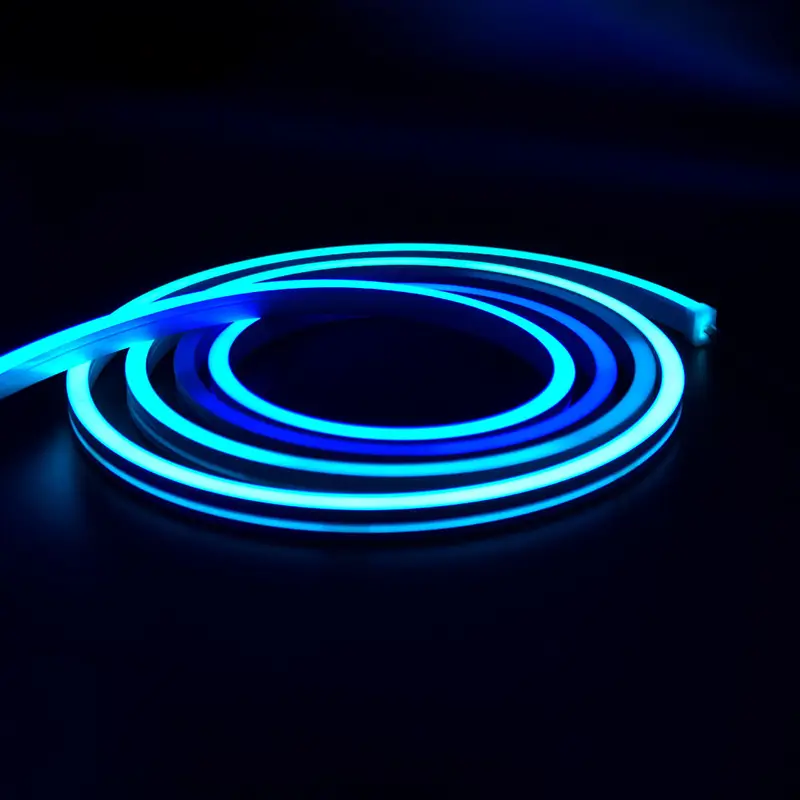
7. Select the Best Color Temperature
The color temperature of your lighting is crucial to creating the right atmosphere. For bedroom lighting design, warm white light (between 2700K and 3000K) is often the most comfortable and creates a relaxing atmosphere. By choosing a warm color temperature, you can enhance the comfort and tranquility of your bedroom. More details about soft white or warm white, pls check What is Soft White Light?
8. Take Advantage of Natural Light
Please make the best use of natural light, which can significantly enhance the atmosphere of the bedroom. Please consider:
- Window Treatments: Use gauzy curtains or blinds to let natural light filter into the room.
- Room Layout: Arrange furniture to avoid blocking natural light sources.
- Light-Colored Walls: Light-colored walls reflect natural light and make the room appear brighter.
9. Integrate Smart Lighting for Enhanced Control
Smart lighting systems allow you to remotely control your bedroom lighting design and create custom lighting scenes, which can provide safe lighting for waking up at night. This can provide additional convenience and flexibility.
10. Use Lighting to Enhance Bedroom Decor Style
The style of your lighting fixtures should complement your overall bedroom lighting design. For example, a modern bedroom might benefit from sleek, minimalist lighting, while a traditional bedroom might look best with ornate chandeliers or sconces.
11. Add a Soft Glow Under the Bed
Creating a soft glow beneath the bed with LED strip lights or rope lights adds a unique touch of ambient lighting to your bedroom design. This technique, often used in hotels, provides gentle illumination, making it easier to navigate the room at night without fully waking up. Under-bed lighting also adds a subtle floating effect, which can make the room feel more modern and stylish.

12. Consider Motion-Sensor Lights for Convenience
Motion-sensor lights provide convenience and energy savings, especially for nighttime use. You can place motion-sensor lights near the floor or under the bed, so they activate only when needed, like for getting up in the middle of the night. These lights offer a hands-free solution that’s especially useful in shared bedrooms where you want to avoid disturbing others with bright lights.
By carefully considering 12 tips, you can create a bedroom that is both functional and stylish. A well-lit bedroom can improve your sleep quality, enhance your mood, and elevate your overall living experience.
Conclusion
Effective bedroom lighting design combines functionality and beauty to meet a variety of needs, from relaxation to reading. You can refer to our 12 tips to arrange your bedroom lighting to get a space that is both warm and practical. Use smart energy-saving lighting to improve comfort and reduce costs.
At Essenled, there are quality LED strip lights and LED neon tubes. If you need LED strips or LED neon tubes for interior decoration, please let me know.

